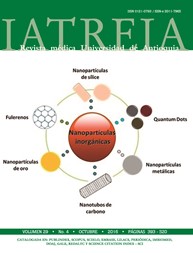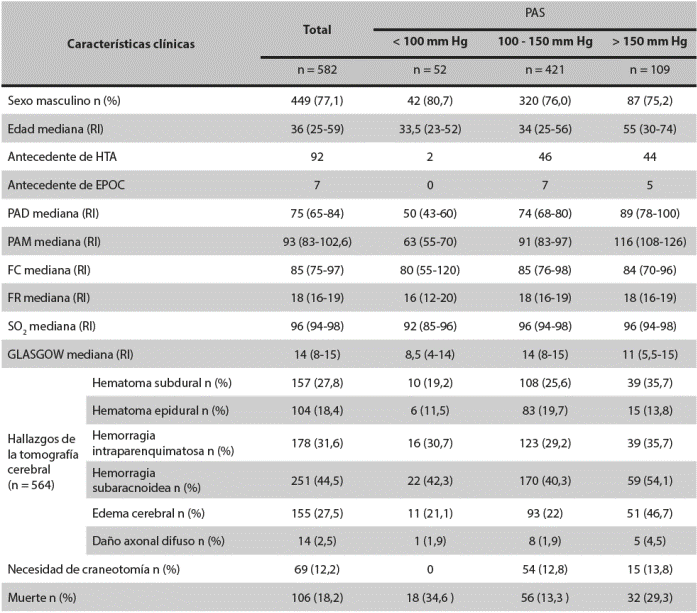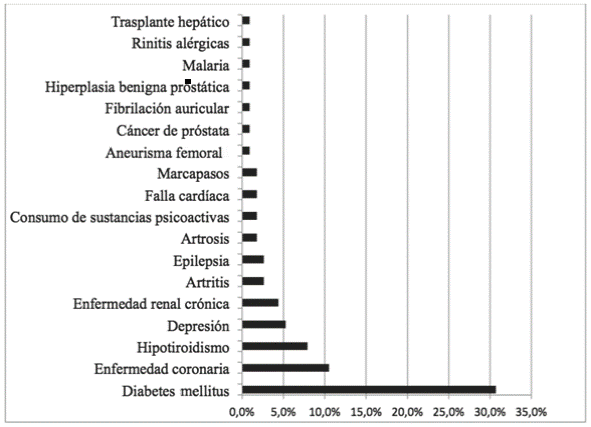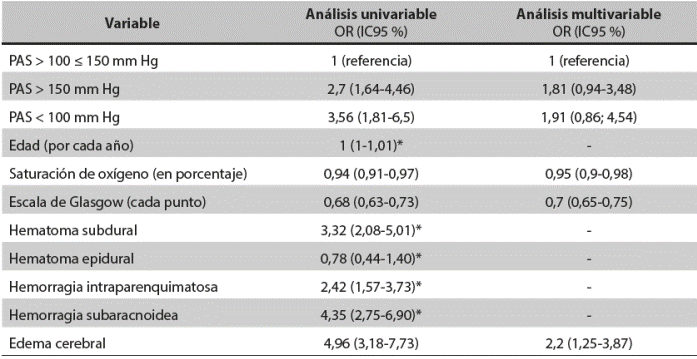Mortality and blood pressure in emergency patients with traumatic brain injury: a retrospective cohort study
DOI:
https://doi.org/10.17533/udea.iatreia.v29n4a02Keywords:
blood pressure, comorbidities, emergency, intracranial pressure, mortality, traumatic brain injuryAbstract
Introduction: Blood pressure is of special relevance in patients with traumatic brain injury (TBI) at admission to emergency services, since it is the basis of cerebral perfusion pressure. The purpose of this research was to estimate the association between blood pressure values measured on admission and hospital mortality in patients with TBI.
Methods: Retrospective cohort study in patients older than 18 years admitted with TBI to Hospital Pablo Tobón Uribe, in Medellín (Colombia) between January 2012 and January 2014. A multivariate logistic regression model was performed to estimate the independent effect of blood pressure values on mortality.
Results: 582 patients with a median age of 36 years (IQR = 25-59) 77.1 % of them males (n = 449) were evaluated. Mortality according to categories of systolic blood pressure at admission (<100, 100-150 and >150 mmHg) was as follows: 34.6 % (18/52), 13.3 % (56/421) and 29.4 % (32/109), respectively. Univariate analysis showed that blood pressure less than 100 or greater than 150 mm Hg were associated with hospital mortality, but that association lost magnitude and statistical significance (OR = 1.81; 95 % CI = 0.94-3.48 and OR = 1.91; 95 % CI = 0.86-4.54, respectively) after adjustment by Glasgow coma scale, oxygen saturation and cerebral edema.
Conclusions: We did not demonstrate a statistically significant association between blood pressure values at admission to the emergency service and mortality in patients with TBI.
Downloads
References
(1.) Kolias AG, Guilfoyle MR, Helmy A, Allanson J, Hutchinson PJ. Traumatic brain injury in adults. Pract Neurol. 2013;13(4):228-35.
(2.) Henzler D, Cooper DJ, Tremayne AB, Rossaint R, Higgins A. Early modifiable factors associated with fatal outcome in patients with severe traumatic brain injury: a case control study. Crit Care Med. 2007;35(4):1027-31.
(3.) Marmarou A, Maset AL, Ward JD, Choi S, Brooks D, Lutz HA, et al. Contribution of CSF and vascular factors to elevation of ICP in severely head-injured patients. J Neurosurg. 1987;66(6):883-90.
(4.) Chan KH, Miller JD, Dearden NM, Andrews PJ, Midgley S. The effect of changes in cerebral perfusion pressure upon middle cerebral artery blood flow velocity and jugular bulb venous oxygen saturation after severe brain injury. J Neurosurg. 1992;77(1):55-61.
(5.) Cleveland W. Robust locally weighted regression and smoothing scatterplots. J Am Stat Assoc. 1979 Dec; 74(368): 829-36. 6. Tolias C. Initial Evaluation and Management of CNS Injury. [Internet]. [consultado 2015 Jun 15]. Disponible en: http://emedicine.medscape.com/article/
-overview.
(7.) Cremer OL, van Dijk GW, Amelink GJ, de Smet AM, Moons KG, Kalkman CJ. Cerebral hemodynamic responses to blood pressure manipulation in severely head-injured patients in the presence or absence of intracranial hypertension. Anesth Analg. 2004;99(4):1211-7.
(8.) Guzmán F. Fisiopatología del trauma craneoencefálico. Colombia Médica. 2008 Jul; 39 (3): 78-84.
(9.) Stenberg M, Koskinen LO, Levi R, Stalnacke BM. Severe traumatic brain injuries in Northern Sweden: a prospective 2-year study. J Rehabil Med. 2013;45(8):792-800.
(10.) Heegaard W, Biros M. Head Trauma. In: Marx, Hockberger, Walls, eds. Rosen’s Emergency Medicine: Concepts and Clinical Practice 8th edition. Elsevier, Philadelphia, PA 2013.
(11. Fuller G, Hasler RM, Mealing N, Lawrence T, Woodford M, Juni P, et al. The association between admission systolic blood pressure and mortality in significant traumatic brain injury: a multi-centre cohort study. Injury. 2014;45(3):612-7.
(12.) Saadat S, Akbari H, Khorramirouz R, Mofid R, Rahimi-Movaghar V. Determinants of mortality in patients with traumatic brain injury. Ulus Travma Acil Cerrahi Derg. 2012;18(3):219-24.
(13.) Brenner M, Stein DM, Hu PF, Aarabi B, Sheth K, Scalea TM. Traditional systolic blood pressure targets underestimate hypotension-induced secondary brain injury. J Trauma Acute Care Surg. 2012;72(5):
-9.
(14.) Utomo WK, Gabbe BJ, Simpson PM, Cameron PA. Predictors of in-hospital mortality and 6-month functional outcomes in older adults after moderate to severe traumatic brain injury. Injury. 2009;40(9):973-7.
(15.) Ley EJ, Singer MB, Clond MA, Gangi A, Mirocha J, Bukur M, et al. Elevated admission systolic blood pressure after blunt trauma predicts delayed pneumonia and mortality. J Trauma. 2011;71(6): 1689-93.
Published
How to Cite
Issue
Section
License
Copyright (c) 2016 Universidad de Antioquia

This work is licensed under a Creative Commons Attribution-NonCommercial-ShareAlike 4.0 International License.
Papers published in the journal are available for use under the Creative Commons license, specifically Attribution-NonCommercial-ShareAlike 4.0 International.
The papers must be unpublished and sent exclusively to the Journal Iatreia; the author uploading the contribution is required to submit two fully completed formats: article submission and authorship responsibility.

















